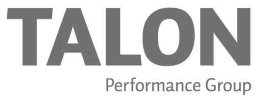The most successful leaders are those who strategically align their policies, actions, behaviors, and body language with their verbal messages. Here are three reasons why the future of effective leadership is linked with non-verbal communication.
1. THE VISUAL TECHNOLOGY REVOLUTION MAKES BODY LANGUAGE SKILLS CRUCIAL.
Leaders have always been under scrutiny, but with future developments in visual technology, a leader’s body language will be even more exposed to evaluation. For example, there is no doubt that videoconferencing and telepresence, which allows participants to see and be seen as life-size images, can help build stronger bonds and improve rapport. However, video communication can also heighten participants’ anxiety and self-consciousness because there is no hiding behind a text message or computer screen. Leaders will need to develop their nonverbal skills to make the most of these tools.
2. LEADERS TODAY ARE EXPECTED TO BE EMPATHIC AND TRUSTWORTHY.
The body language of effective leaders will be increasingly “warm.” There are two sets of body language cues that followers look for in leaders. One set projects warmth and empathy whereas the other signals power and status. Both are necessary for leaders today and will be critical to the success of leaders in the future. However, if your organization is headed toward a collaborative structure and philosophy, then effective leadership becomes less about projecting power and more about building relationships. Relationship-building, in turn, is all about the body language of trust, inclusion and empathy. So the “soft side” of nonverbal communication, which has been undervalued and underutilized by leaders more concerned with projecting strength, status and authority, will become central to achieving business goals.
3. AUTHENTICITY WILL BE INCREASINGLY REVEALED THROUGH BODY LANGUAGE.
Body language reveals character. No leader, regardless of how skilled a non-verbal communicator, can fool the people who work with him or her over an extended period of time. Sooner or later, your body will give you away. Like good manners and good grammar, body language is a tool for expressing your “best” self in a certain situation and is a highly valuable tool. It just can’t hide your character.
EFFECTIVE NONVERBAL LEADERSHIP TIPS
1. BEFORE AN IMPORTANT MEETING, BREATHE.
Right before you enter the meeting room, deeply inhale through your nose and exhale through your mouth. If you are unobserved, make a soft “ahh” sound. Doing so releases the tension in your neck, shoulders and jaw that can make you look rigid or aggressive. Do this one to three times.
2. NOTICE HOW FAST YOU CAN MAKE OR BREAK RAPPORT.
While seated at a conference table across from your counterpart, push back from the table and lean away from them. You’ll most likely see your counterpart react in kind by backing away from you. Now lean forward and put your hands on the table (with your palms showing), look them in the eyes and smile. Watch as the interaction warms up and is much more friendly and open. That’s how fast your body language can help you build or break rapport.
3. TO INCREASE TEAM PRODUCTIVITY, KEEP YOUR BODY LANGUAGE OPEN.
People are constantly monitoring their leader for emotional cues. If your body looks closed, depressed or angry, these postures and their corresponding emotions will be subconsciously picked up and mimicked by your team. It’s a process called “emotional contagion” – and it can also work in your favor. If you keep your posture relaxed, inclusive and open, your team will respond by being more cohesive, positive and productive.
4. TO LOOK DECISIVE, ROTATE YOUR PALMS DOWN.
In essence, gestures with palms exposed show that you are open and willing to negotiate on a particular point, while palms turned down indicate that you are closed to negotiation. But people also automatically pronate their hands when they feel strongly about something. In fact, a definitive gesture of authority when you speak is placing both hands palms down, on or right above the conference table.
5. MAKE YOUR MOVEMENT AND GESTURES PURPOSEFUL.
Just like you bullet point out a pitch or presentation, do the same with gestures. Human beings are drawn to movement. If you move when you speak, you’ll catch people’s attention. It can be especially effective to move toward the audience before making a key point and away when you want to signal a break or a change of subject. You can also use space to reinforce your ideas. You have the most impact when you combine movement with physical pauses in which you stand absolutely still to highlight your most important points.
The good news is that whatever your nonverbal communication is right now, you can increase your awareness and change ineffective body language habits. You can develop a deeper understanding of the impact that certain nonverbal behaviors have on your audiences and you can add more effective gestures, postures and expressions to your leadership repertoire. The most charismatic, influential and powerful body language will always be that which is totally congruent with who you are, what you stand for and what you truly believe.
